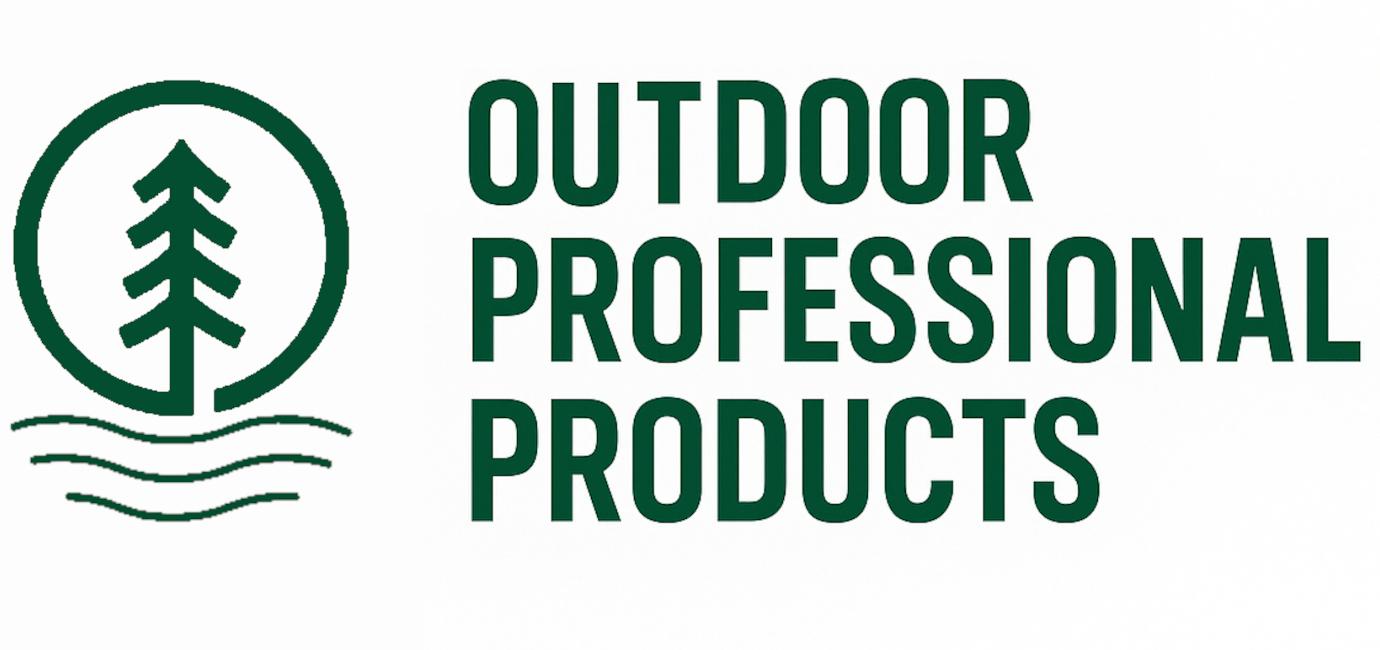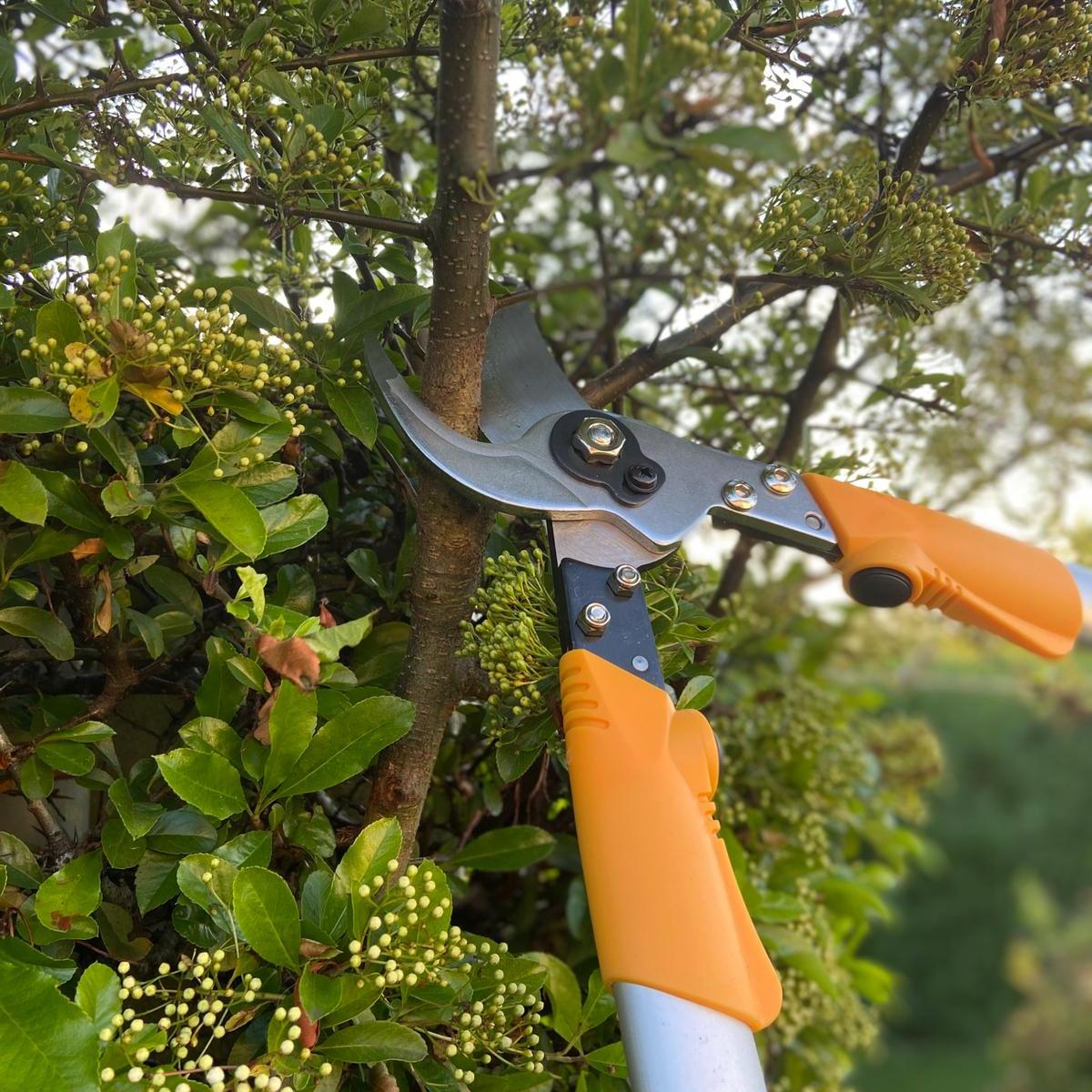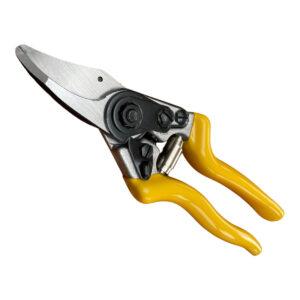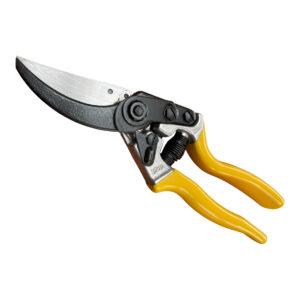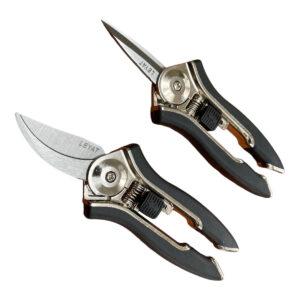Description
DISCOVER THE PLANTS THAT SHOULD BE PRUNED IN SUMMER…
Pruning the right plants in summer is just as important as pruning in any other season. For better display and keeping plants within boundaries to encouraging bigger crops from fruit trees and bushes. Here’s the scientific bit – Removing new summer growth before it turns woody reduces growth-promoting nitrogen, which in turn allows potassium to build up. In short, the more potassium within means more flowers and more fruit!
Secateurs, loppers, folding pruning saws and pruning handsaws will enable you to tackle a wide variety of jobs.
REMEMBER THOUGH… Not all plants are suitable for summer pruning. Some plants should be pruned in autumn, while others are best left until winter or spring. Check out our ‘what to prune in’ guides for other seasons.
Spring Flowering Shrubs
Shrubs that flower on stems formed in the previous year need to be pruned in summer, after flowering. You’ll also keep plants, such as shrubs, climbers and rambling roses, within bounds and maintain an attractive shape. Remove any stems killed by frost to encourage strong new growth to grow from low down in the plant. It’s best to leave this until early summer when all risk of frost has passed.
Fruit Trees
Removing soft, new growth will promote fruit formation on apple, pear, cherry and plum trees. The aim is to create space that will allow more light and air in through the tree by pruning excess growth. The enhanced light and air gaps will help the fruit to ripen. Loppers and a pruning handsaw cut thick branches quickly whilst for extended reach a telescopic polesaw can be used to prune high hard to reach branches.
Tender Shrubs
Plants that can be damaged by late frosts should be left till summer to prune. Prune after flowering to encourage strong new growth that will flower next year. Remove the oldest, woody stems right down to the base. Secateurs can remove small stems whilst a pruning saw will quickly cut through thick branches.
Hedging
During summer cut back the current season’s growth to maintain shape. Clip slow-growing beech, hornbeam or box at the start and end of the summer. Trim fast-growing privet every six weeks.
Climbers
With ideal seasonal climate, many climbers need to be summer pruned to keep their growth under control. Climbers, such as wisteria, jasmine and honeysuckle may outgrow their allotted space so a light prune can maintain their health and attractive display. Prune back trailing stems, leaving just three to four leaves on the current season’s growth. The stems of climbers such as honeysuckle are short lived, so prune out some of these older stems to avoid a bare base with flowers only at the top. Then train in new growth to ensure there’s an even spread of flowers. Wisteria needs pruning twice a year, in summer and in winter.
Rambling Roses
Rambling roses usually flower once in June. They can put on 5m growth in a year! Pruning after flowering, will help plants to flower with plenty of space to avoid tangling. Remove thin, dead, diseased or dying stems. Then take out branches that have outgrown their allotted space. Then choose a third of the oldest, flowered stems and cut them as low down on the plant as possible. Tie in new, vigorous shoots which will encourage these to flower next year. Prune back any sappy growth and shorten side shoots by a third.
Evergreens
Despite being hardy, all evergreens are considered tender and sensitive to pruning. All evergreens should not be pruned too early in the year, as stems will be vulnerable to frost damage. Early summer is the ideal time to prune them to maintain their shape, control their size and remove any frost-damaged stems. Remove around a third of the old wood, taking away any crossing and congested branches. Trim back new growth to reshape the plant and cut back any long, unproductive stems. Always cut back to just above a leaf joint or bud.
This guide is intended to give information and advice only. It is the user’s responsibility to ensure necessary training and experience is achieved to use a pair of secateurs and pruning tools safely.
